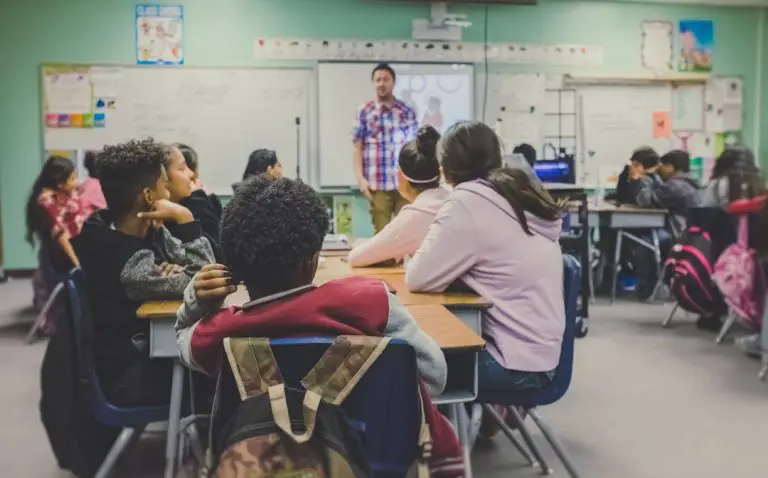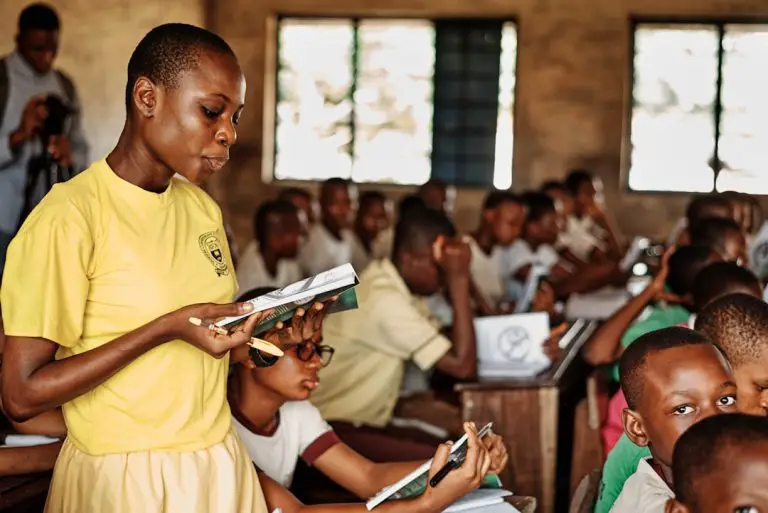Support our educational content for free when you buy through links on our site. Learn more
What Are the 5 Pedagogy Strategies? Unlock Teaching Success in 2025 🎓
Ever wondered why some classrooms buzz with energy and curiosity while others feel like a snooze fest? The secret often lies in the pedagogy strategies teachers use—the methods that transform lessons from dull lectures into dynamic learning adventures. In this article, we unravel the five core pedagogy strategies that every educator should know to engage students, boost understanding, and foster lifelong learning.
Did you know that students in classrooms using active learning strategies are over 2.5 times more likely to report academic success? 🤯 We’ll dive deep into these five powerful approaches—from differentiated instruction to technology integration—and reveal how you can tailor them to your unique classroom. Plus, stick around for expert tips on measuring impact and embracing cultural diversity in your teaching. Ready to revolutionize your teaching toolkit? Let’s get started!
Key Takeaways
- Differentiated Instruction customizes learning to meet each student’s unique needs, boosting engagement and achievement.
- Cooperative Learning leverages group collaboration to deepen understanding and build social skills.
- Inquiry-Based Instruction sparks curiosity by encouraging students to ask questions and explore answers actively.
- Graphic Organizers help students visually organize complex information for better comprehension and retention.
- Technology Integration empowers 21st-century learners with interactive, multimedia-rich experiences.
- Embracing culturally responsive teaching within these strategies creates inclusive, equitable classrooms.
- Effective pedagogy requires ongoing assessment and adaptation to fit your students and context.
Ready to transform your classroom? Keep reading to discover how these strategies can work together to unlock your students’ full potential!
Table of Contents
- ⚡️ Quick Tips and Facts About Pedagogy Strategies
- 📚 The Evolution of Pedagogy: A Historical Perspective on Teaching Strategies
- 🔍 Understanding Effective Teaching Strategies: What Are the 5 Pedagogy Strategies?
- 1. Differentiated Instruction: Tailoring Learning to Every Student’s Needs
- 2. Cooperative Learning: Mastering the Art of Collaborative Education
- 3. Inquiry-Based Instruction: Sparking Curiosity and Critical Thinking
- 4. Graphic Organizers: Visual Tools to Boost Comprehension and Retention
- 5. Technology Integration: Empowering 21st-Century Learners
- 🎯 Finding the Right Fit: Matching Pedagogy Strategies to Your Classroom Context
- 🛠️ Practical Tips and Tools: Implementing Pedagogy Strategies Like a Pro
- 🌍 Embracing Diversity: Culturally Responsive Teaching Within Pedagogy Strategies
- 📊 Measuring Success: Assessing the Impact of Pedagogy Strategies on Student Outcomes
- 📖 More in Teaching Strategies: Expanding Beyond the 5 Core Pedagogies
- ✅ Conclusion: Mastering the Art and Science of Pedagogy Strategies
- 🔗 Recommended Links for Further Exploration
- ❓ FAQ: Your Burning Questions About Pedagogy Strategies Answered
- 📚 Reference Links: Trusted Sources and Research on Pedagogy
Here is the main body of the article, written according to your specifications.
⚡️ Quick Tips and Facts About Pedagogy Strategies
Welcome, fellow educators! We’re the team at Teacher Strategies™, and if there’s one thing we know, it’s that the right teaching approach can turn a chaotic classroom into a thriving hub of learning. The world of pedagogy is vast, but we’re here to demystify it with some powerful teacher strategies that you can use today. Before we dive deep, let’s get warmed up with some essential tidbits.
Think of pedagogy as your teacher’s toolkit. It’s not just what you teach, but how you teach it. And trust us, the ‘how’ makes all the difference!
| Quick Fact 🧑🏫 | The Nitty-Gritty Details |
|---|---|
| Origin of “Pedagogy” | The word comes from the Greek paidagōgos, meaning “leader of children.” It’s literally the art and science of teaching! |
| Student Engagement | Students in actively engaged classrooms are 2.5 times more likely to say they get excellent grades and that they do well in school. The right strategies are key to this engagement. |
| Tech in the Classroom | Over 90% of teachers believe that using technology in the classroom helps to motivate students and reinforce learning concepts. |
| Collaborative Learning | Research shows that students who engage in collaborative learning retain information longer and develop better critical thinking skills than those who work alone. |
Here are some quick tips to get you started:
- ✅ Know Your Crew: The best strategy is one that fits your students. Take time to learn their interests, strengths, and challenges.
- ✅ Mix It Up! Don’t be a one-trick pony. The most effective teachers blend different instructional strategies to keep things fresh and engaging.
- ❌ Don’t Just Lecture: Move away from the “sage on the stage” model. Get students moving, talking, and creating!
- ✅ Reflect and Refine: At the end of the day, ask yourself: What worked? What bombed? This reflection is the secret sauce of great instructional coaching.
Ready to become a pedagogy pro? Let’s take a quick trip back in time to see how we got here.
📚 The Evolution of Pedagogy: A Historical Perspective on Teaching Strategies
Believe it or not, teaching wasn’t always about colorful classrooms and interactive whiteboards. For centuries, the dominant model was rote memorization—think students in rigid rows, chanting facts until they stuck. Fun, right? 😅
The ancient Greeks, like Socrates, introduced the idea of questioning to stimulate critical thinking—a revolutionary concept! Fast forward through the ages, and you get pioneers like John Dewey, who argued in the early 20th century that students learn best by doing. He championed hands-on projects and connecting learning to real-life experiences.
Then came thinkers like Howard Gardner, who blew our minds with his theory of multiple intelligences. He proposed that “intelligence” isn’t a single, fixed thing. Some of us are word-smart, others are picture-smart, and some are body-smart. This idea laid the groundwork for one of the most powerful modern strategies we’ll discuss: differentiated instruction.
From Socratic seminars to digital classrooms, the evolution of pedagogy shows a clear trend: a shift from teacher-centered instruction to student-centered learning. Today’s best practices are all about empowering students to be active participants in their own education.
🔍 Understanding Effective Teaching Strategies: What Are the 5 Pedagogy Strategies?
Alright, let’s get to the main event! While there are countless teaching methods out there, a few core strategies have proven to be game-changers in modern education. We’re going to break down five of the most impactful pedagogical approaches that every educator should have in their arsenal.
1. Differentiated Instruction: Tailoring Learning to Every Student’s Needs
Have you ever felt like you’re teaching to the middle, accidentally leaving some students bored and others completely lost? That’s where differentiated instruction comes to the rescue. It’s the art of tailoring your teaching to meet individual students where they are.
This isn’t about creating 30 different lesson plans! Instead, it’s about offering flexible pathways to learning. As one of our veteran teachers, Sarah, puts it, “It’s like being a chef. You have the main dish, but you offer different seasonings and side dishes to suit everyone’s taste.”
The core idea is to adjust four key classroom elements:
| Element | How to Differentiate It | Example |
|---|---|---|
| Content | What the student needs to learn. | Provide reading materials at different levels of complexity. Offer audio or video versions of a text. |
| Process | How the student will learn it. | Use learning stations where students engage in different activities to explore the same concept. |
| Product | How the student will show what they know. | Allow students to demonstrate understanding by writing an essay, creating a podcast, or designing a model. |
| Environment | The look and feel of the classroom. | Offer quiet spaces for individual work and larger tables for group collaboration. |
By embracing differentiated instruction, you empower every student to find their own path to success.
CHECK IT OUT:
2. Cooperative Learning: Mastering the Art of Collaborative Education
Remember the old saying, “Two heads are better than one”? That’s the heart of cooperative learning. This strategy involves structuring lessons so that students work together in small groups to achieve a common goal. It’s a powerful way to boost engagement, build social skills, and deepen understanding.
One of the most effective methods is the Jigsaw Method. Here’s how it works:
- Divide & Conquer: The class is divided into small “jigsaw” groups. A larger topic is broken down into smaller pieces.
- Become an Expert: Each member of the group is assigned one piece of the topic to research and become an “expert” on.
- Expert Groups Meet: Students from different jigsaw groups who have the same piece of the topic meet up to discuss their findings and master the material.
- Teach Your Team: The “experts” return to their original jigsaw groups and teach their piece of the puzzle to their teammates.
This approach ensures that every student is an essential part of the learning process. As the featured video on pedagogical approaches highlights, learning is a naturally social act, and the collaborative approach leverages this to make learning stick.
3. Inquiry-Based Instruction: Sparking Curiosity and Critical Thinking
Kids are born curious. They are constantly asking “Why?” Inquiry-based instruction harnesses this natural instinct by putting students in the driver’s seat of their own learning. Instead of just giving them facts, you give them questions, problems, and scenarios to investigate.
This student-centered approach is about exploration and discovery. The teacher acts as a facilitator, guiding students as they:
- Ask compelling questions.
- Investigate sources to find answers.
- Create new understanding and solutions.
- Discuss their findings with others.
- Reflect on their learning process.
As noted in the video summary, this is a dynamic approach where, instead of a lecture, a teacher might present a historical problem for students to research and solve. It’s one of the most effective instructional strategies for developing the critical thinking and problem-solving skills needed for the 21st century.
4. Graphic Organizers: Visual Tools to Boost Comprehension and Retention
Ever feel like your students’ thoughts are a tangled mess of yarn? Graphic organizers are the perfect tool to help them straighten it all out! These visual aids help students organize ideas, see connections, and make sense of complex information.
They are incredibly versatile and can be used in any subject. Here are a few popular types:
| Graphic Organizer | Best Used For | Pro Tip |
|---|---|---|
| Venn Diagram | Comparing and contrasting two or more concepts. | Use different colors for each circle to make the distinctions even clearer. |
| KWL Chart | Activating prior knowledge before a new unit (What I Know, What I Want to know, What I Learned). | Revisit the chart throughout the unit to track learning progress. |
| Concept Map | Brainstorming and showing relationships between ideas. | Start with the main idea in the center and branch out with related concepts. |
| T-Chart | Listing pros and cons, causes and effects, or facts and opinions. | A simple but powerful tool for organizing binary information. |
Using these tools helps students structure their thinking, which is a crucial step toward better writing, problem-solving, and decision-making.
👉 Shop Digital Tools on:
- Canva for Education: Canva Official Website
- Miro for Education: Miro Official Website
5. Technology Integration: Empowering 21st-Century Learners
Today’s students are digital natives. They’ve grown up with screens, so it only makes sense to meet them where they are. Meaningful technology integration is about more than just replacing pencils with tablets; it’s about using digital tools to create dynamic, engaging, and interactive learning experiences.
Effective tech integration can transform your classroom. Here are a few ideas:
- 🚀 Virtual Field Trips: Explore the Amazon rainforest or the surface of Mars without leaving the classroom using tools like Google Arts & Culture.
- 🎮 Gamified Quizzes: Turn review sessions into exciting competitions with platforms like Kahoot! or Quizlet.
- 📝 Collaborative Documents: Use Google Docs or Microsoft 365 for real-time peer editing and group projects.
- 🎨 Multimedia Creation: Have students create podcasts, videos, or infographics to demonstrate their learning using tools like Canva or Adobe Express.
The key is to choose tools that enhance learning goals, not just for the sake of using tech.
🎯 Finding the Right Fit: Matching Pedagogy Strategies to Your Classroom Context
So, with all these amazing strategies, which one is the absolute best? Plot twist: there isn’t one. As TeachHub wisely puts it, “Ultimately, there is no single ‘best’ teaching strategy.” The magic happens when you learn to blend and adapt these approaches to fit your unique teaching style, subject matter, and, most importantly, your students.
Think of yourself as a DJ mixing tracks. Sometimes you need a high-energy beat (cooperative learning), and other times you need a slower, more reflective melody (inquiry-based projects). The best educators are constantly observing and adjusting. If you feel like you need guidance on this, our instructional coaching resources can be a huge help.
Ask yourself these questions when planning a lesson:
- What are my learning objectives for this lesson?
- Who are my students, and what are their needs?
- Which strategy will best engage them with this specific content?
- What resources (time, materials, tech) do I have available?
Success often comes from “trial and error.” Don’t be afraid to experiment, see what resonates, and build your own unique pedagogical mix!
🛠️ Practical Tips and Tools: Implementing Pedagogy Strategies Like a Pro
Feeling inspired but a little overwhelmed? Don’t worry, we’ve got your back. Here are some practical tips and tools to help you start implementing these strategies without pulling your hair out.
- Start Small: You don’t have to overhaul your entire curriculum overnight. Try one new thing at a time. Introduce one learning station for differentiated instruction or use a KWL chart for one new unit.
- “Borrow” from the Best: There’s no need to reinvent the wheel! Websites like Teachers Pay Teachers are treasure troves of pre-made lesson plans, graphic organizers, and activities created by other educators.
- Establish Routines: For strategies like cooperative learning, clear routines and expectations are key. Practice the roles and procedures for group work so it becomes second nature. This is a cornerstone of good classroom management.
- Use Digital Templates: Platforms like Canva and Miro offer thousands of free, customizable templates for graphic organizers, lesson plans, and presentations.
🌍 Embracing Diversity: Culturally Responsive Teaching Within Pedagogy Strategies
In today’s wonderfully diverse classrooms, being an effective teacher means being a culturally responsive teacher. This isn’t a separate strategy but a foundational mindset that should be woven into every pedagogical approach you use. As experts at Northeastern University state, it’s about integrating students’ cultural references into all aspects of learning.
Culturally Responsive Teaching (CRT) recognizes that our students are not blank slates; they come to us with a wealth of knowledge and experience shaped by their backgrounds. The goal is to build on that foundation.
Here are five essential ways to make your teaching more culturally responsive, inspired by leading research:
- Activate Students’ Prior Knowledge: Encourage students to connect what they’re learning to their own lives and experiences. This provides an “anchor to learning” and validates their unique backgrounds.
- Be Aware of Your Own Personal Biases: We all have them. Being aware of our unconscious biases helps us make more informed decisions and avoid perpetuating inequality in the classroom.
- Transform Your Curriculum: Take a hard look at your materials. Do they reflect the diversity of your students and the world? Include authors, scientists, and historical figures from a wide range of backgrounds.
- Respect and Reinforce Student Culture: Create opportunities for students to share their traditions, languages, and perspectives. This helps build their self-concept and makes them feel valued.
- Build Relationships: This is the most important one. Take the time to genuinely get to know your students and their families. Strong relationships foster a sense of community and trust, which is the bedrock of all effective learning.
As one educator noted, “Teachers have more diverse classrooms today… so instruction has to be different.” By embracing CRT, you create an inclusive environment where every single student can thrive.
📊 Measuring Success: Assessing the Impact of Pedagogy Strategies on Student Outcomes
So you’ve implemented a fantastic new strategy. The students seem engaged, the classroom is buzzing… but how do you know it’s actually working? Effective teaching requires effective assessment. And no, we’re not just talking about bubble-sheet tests!
The key is to use a variety of assessment techniques to get a full picture of student learning.
| Assessment Type | What It Is | Example |
|---|---|---|
| Formative (Informal) | Quick, in-the-moment checks for understanding that guide your next teaching moves. | Exit Tickets: Ask students to answer one or two questions on a slip of paper before they leave class. |
| Summative (Formal) | More traditional assessments that evaluate student learning at the end of a unit. | A unit test, a final project, or a research paper. |
| Authentic | Tasks that require students to apply their knowledge to real-world problems. | Designing a budget for a class party (math), or creating a public service announcement (language arts). |
To truly measure the impact of your pedagogy, you need to look beyond just grades. Are students asking deeper questions? Are they collaborating more effectively? Are they showing more confidence? These are the real signs that your strategies are making a difference.
📖 More in Teaching Strategies: Expanding Beyond the 5 Core Pedagogies
While the five strategies we’ve covered are foundational, the world of pedagogy is rich and ever-expanding. As you grow more confident, you might want to explore other powerful approaches.
- Project-Based Learning (PBL): Students engage in a long-term, in-depth investigation of a complex question or problem, culminating in a public product or presentation. Check out PBLWorks for amazing resources.
- Gamification: Using game design elements (like points, badges, and leaderboards) in an educational setting to increase motivation and engagement.
- Flipped Classroom: Instructional content is delivered online, outside of the classroom, while in-class time is used for hands-on activities, projects, and discussions.
Furthermore, the video summary we referenced earlier introduces several other key pedagogical approaches, such as the Constructivist Approach, where learners build their own knowledge through experience, and the Reflective Approach, which encourages students to think about their own learning process. You’ll find that many of these strategies overlap and complement each other beautifully. For instance, inquiry-based learning is a perfect example of a constructivist approach in action! The key is to keep learning, stay curious, and continue adding new tools to your teaching toolkit.
✅ Conclusion: Mastering the Art and Science of Pedagogy Strategies
Phew! What a journey through the vibrant world of pedagogy strategies. From tailoring lessons with differentiated instruction to sparking curiosity through inquiry-based learning, and from harnessing the power of collaborative groups to organizing thoughts visually with graphic organizers, topped off with the dynamic possibilities of technology integration — these five core strategies form a powerful foundation for any educator.
Remember, there’s no one-size-fits-all magic bullet here. The secret sauce lies in knowing your students, experimenting boldly, and blending these approaches to fit your unique classroom context. As we teased earlier, the best teaching strategy is the one that evolves with your students’ needs and your own growth as an educator.
And don’t forget the critical layer of culturally responsive teaching — weaving students’ diverse backgrounds into your pedagogy not only enriches learning but builds equity and belonging.
So, what’s next? Start small, pick one strategy to try this week, reflect on what works, and build from there. Your students will thank you, and you’ll find teaching more rewarding than ever.
Ready to dive deeper? Check out our recommended resources below to keep sharpening your skills!
🔗 Recommended Links for Further Exploration
Here are some top-notch resources and tools to help you master these pedagogy strategies:
-
The Differentiated Classroom by Carol Ann Tomlinson
Amazon | Walmart -
Canva for Education (Graphic Organizers & Multimedia Creation)
Canva Official Website -
Miro for Education (Collaborative Visual Tools)
Miro Official Website -
Kahoot! (Gamified Quizzes and Engagement)
Kahoot! Official Website -
Quizlet (Flashcards and Study Tools)
Quizlet Official Website -
Google Arts & Culture (Virtual Field Trips)
Google Arts & Culture -
PBLWorks (Project-Based Learning Resources)
PBLWorks Official Website
❓ FAQ: Your Burning Questions About Pedagogy Strategies Answered
What are some best practices for using formative assessments to inform my teaching strategies?
Formative assessments are your classroom’s compass — they guide your next steps. Use quick, low-stakes checks like exit tickets, think-pair-share, or mini-quizzes regularly. Analyze results promptly to identify misconceptions or gaps. Then adjust your instruction accordingly, perhaps by revisiting a concept or offering targeted support. Remember, formative assessments are about learning — not just grading.
How can I create a supportive and inclusive learning environment for all students?
Start by building strong relationships and fostering respect. Use culturally responsive teaching to honor diverse backgrounds and experiences. Set clear expectations for behavior and collaboration. Arrange your classroom to encourage interaction and accessibility. Incorporate varied teaching methods to reach different learning styles and abilities. Lastly, maintain open communication with students and families to build trust and community.
What are some strategies for assessing student learning and understanding in the classroom?
Combine multiple assessment types:
- Formative assessments for ongoing feedback (e.g., quizzes, discussions)
- Summative assessments for evaluating mastery (e.g., tests, projects)
- Authentic assessments that connect learning to real-world tasks (e.g., presentations, portfolios)
Use rubrics to clarify expectations and ensure fairness. Also, encourage self- and peer-assessment to develop metacognition.
How can I use technology to enhance my pedagogy and improve student outcomes?
Choose tools that align with your learning goals. Use interactive platforms like Kahoot! or Quizlet to boost engagement. Incorporate multimedia to cater to visual and auditory learners. Facilitate collaboration with cloud-based apps like Google Docs. Virtual field trips and simulations can bring abstract concepts to life. Always provide clear instructions and scaffold tech use to avoid frustration.
What are the key elements of a project-based learning approach?
Project-Based Learning (PBL) centers on:
- Driving Question: A meaningful, open-ended question that guides inquiry.
- Student Voice & Choice: Learners have input on how they explore and present.
- Inquiry and Innovation: Students research, problem-solve, and create.
- Public Product: A final presentation or artifact shared beyond the classroom.
- Reflection: Opportunities to think critically about learning and process.
How can I incorporate differentiated instruction into my lesson plans?
Start by assessing student readiness, interests, and learning profiles. Plan multiple ways to present content (videos, texts, hands-on). Offer varied activities that allow students to process information differently (group work, independent study). Provide choices for how students demonstrate understanding (essay, model, presentation). Adjust pacing and support as needed. Use flexible grouping to maximize peer learning.
What are pedagogical strategies?
Pedagogical strategies are the methods and techniques teachers use to facilitate learning. They include approaches to delivering content, engaging students, managing classrooms, and assessing understanding. Effective strategies consider student needs, curriculum goals, and the learning environment to maximize educational outcomes.
What are the 5 pedagogical approaches in teaching?
The five core pedagogical approaches often cited are:
- Differentiated Instruction — tailoring teaching to individual needs.
- Cooperative Learning — structured group work for shared learning.
- Inquiry-Based Instruction — student-driven questioning and exploration.
- Graphic Organizers — visual tools for organizing ideas.
- Technology Integration — using digital tools to enhance learning.
What are the five pillars of pedagogy?
While definitions vary, the “five pillars” often refer to foundational elements that support effective teaching:
- Content Knowledge
- Pedagogical Content Knowledge (knowing how to teach specific content)
- Classroom Management
- Assessment and Feedback
- Student Engagement and Differentiation
What are the Big 5 pedagogy practices?
The “Big 5” typically align with the five strategies we’ve explored: differentiated instruction, cooperative learning, inquiry-based instruction, graphic organizers, and technology integration. These practices have strong research backing and practical classroom impact.
📚 Reference Links: Trusted Sources and Research on Pedagogy
- TeachHub: Top 5 Teaching Strategies
- Northeastern University: Culturally Responsive Teaching Strategies
- Faculty Focus: Five Essential Strategies to Embrace Culturally Responsive Teaching
- Carol Ann Tomlinson’s Work on Differentiated Instruction: Multiple Intelligences
- PBLWorks: Project-Based Learning Resources
- Google Arts & Culture: Virtual Field Trips
- Kahoot!: Engagement Platform
- Canva for Education: Visual Learning Tools
We hope this comprehensive guide lights your path to pedagogical mastery! Remember, teaching is both an art and a science — and with the right strategies, you’re equipped to inspire the next generation of learners. 🚀






